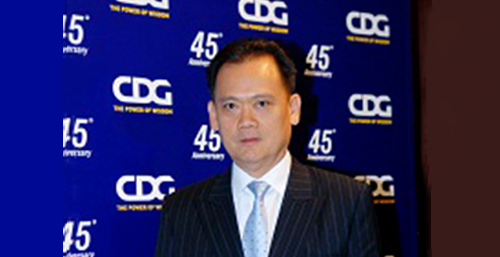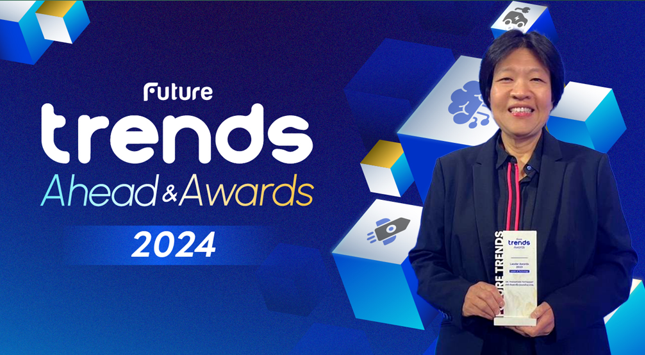Veteran IT company set sights on AEC
Asina Pornwasin
The Nation June 25, 2013
CDG Group, a Thai company that has been in the IT business for 45 years, aims to be among the top-10 IT firms in Asean by 2015.
Nart Liuchareon, who has been the company ‘s chief executive officer for 27 years, has targeted 15 per cent of revenue from the ASEAN Economic Community, which comes into effect in 2015, in the next five years. In the near future, the group also has plans to open an office in Myanmar.

Nart said the company would expand in the region once the AEC is born in 2015. The company would export its successful products to governments in Asean.
With CDG ‘s experience, specialisation, and knowledge, the group is confident of effectively providing IT service solutions to customers in the ASEAN market.
“CDG Group will aim to make inroads in the region by continuously providing effectively standardised works, including improvement of knowledge and competency of personnel and operation methods to achieve the most efficiency. We are putting efforts to create a strong ASEAN partnership network to strengthen the group ‘s business and also expand our markets,” said Nart.
CDG Group is one of only a few Thai IT companies that have survived the march of technology and business models. Throughout its 45 years, CDG has been dynamic and managed to maintain its competitiveness even during times of change and crisis.
Nart said a dynamic strategy was the key behind the group’s strong competitiveness for 45 years, and now it is preparing itself for the wider ASEAN region.
“The key strategy is called distributed model – to grow and then spin off. Our organisation does not have too many levels of management. We expand the business with the spin-off model rather than increase the number of businesses under the same company. We want our business as a whole to be fast moving, dynamic and competitive. This model also helps us to preserve our resources,” said Nart.
CDG Group started as Control Data (Thailand) 45 years ago, as an IT trading company supplying computer systems to the government sector. The group was run by Nart’s father, Yingyong Liuchareon, the founder. That was the time of mainframe-based computing.
The second era of CDG Group started 27 years ago when Nart took over from his father in the era of minicomputers. Nart said the computer market at the time was very small and limited to only the government sector. Only 20 to 30 per cent of organisations had adopted computer systems.
He added that in the first 10 years of his management CDG’s revenue on average increased by more than 30 per cent every year.
“It was a very high-growth period. In the first three years, we grew more than 100 per cent every year. At the time, we were enjoying our growth,” said Nart.
Apart from distributed business strategy, Nart said the group always embraced new technologies to be differentiated from its rivals. CDG was the pioneer in new technologies and new business models, for example a pioneer in the UNIX, open system, and CAD/CAM technology.
“We try to differentiate ourselves [from competitors] so we have to bet on technologies. We won some and lost some times. However, we continued to enjoy growth,” said Nart.
In the last 15 years, as the company expanded, there was duplication of functions and resources. It needed to be reorganised, by merging and regrouping the companies. The move was to reduce cannibalisation among the group’s companies.
Then, CDG Group was offering IT solutions to its main customers, which was mostly the government sector.
The group is behind the government’s IT system, for example the National ID Card system.
“Of our total revenue at the time, 80 per cent came from the government sector, and 20 per cent from the private sector,” said Nart.
As CDG plays a role as a system integrator, which relies on other stakeholders in the business eco-system, including hardware vendors, partners, and importantly customers, Nart said when these people changed their behaviour and business models, CDG also adjusted itself.
Nine years ago, CDG Group had gone for a restructuring. It set up G-Able Group to dedicatedly oversee the private sector, while CDG Group dedicatedly took care of the government market.
Currently, the group’s revenue comes equally from the government and private sector.
“Relying only on the government market is a risk. We set up a new company, G-Able, to take care of the private sector. That really helped us to expand our business footprints,” said Nart.
He admitted that in the first two years of the latest reorganisation, the revenue dropped for two years. After that the revenue picked up.
“The group tries to keep its competitive advantage. We started as a trader, then became system integrator, and now have our own intellectual property by development of software with both vertical and horizontal solutions,” said Nart.
He added that CDG Group and G-Able Group would remain pioneers in new technology areas. For example, the group intends to go for business outsourcing, being a business consultant and mobile computing. Both CDG Group and G-Able Group generate revenue of about Bt5 billion each year, and it keeps growing at 10 per cent per year.
“In the past, technologies were different. We were a distributor who did not need to worry about the market as long as we had the newest technology. But now technologies are the same. The difference is who has the right business innovation, including teams, management, process, approaches and business models, that can attract customers,” said Nart.







